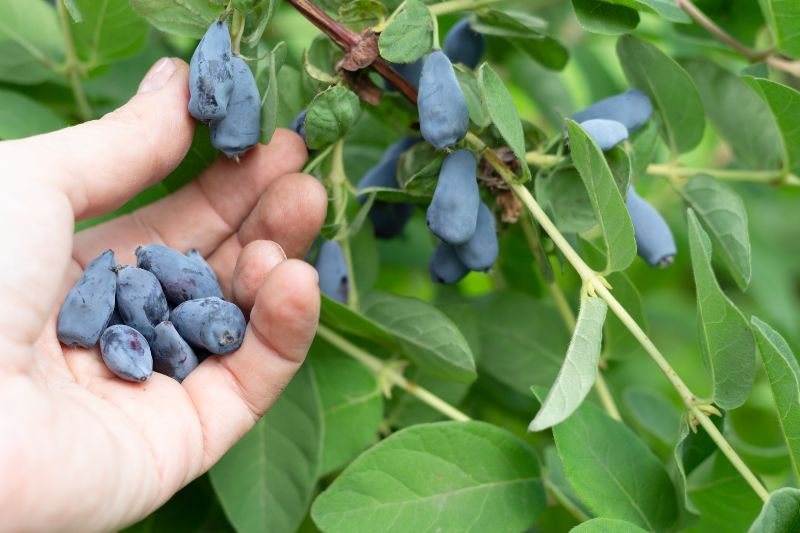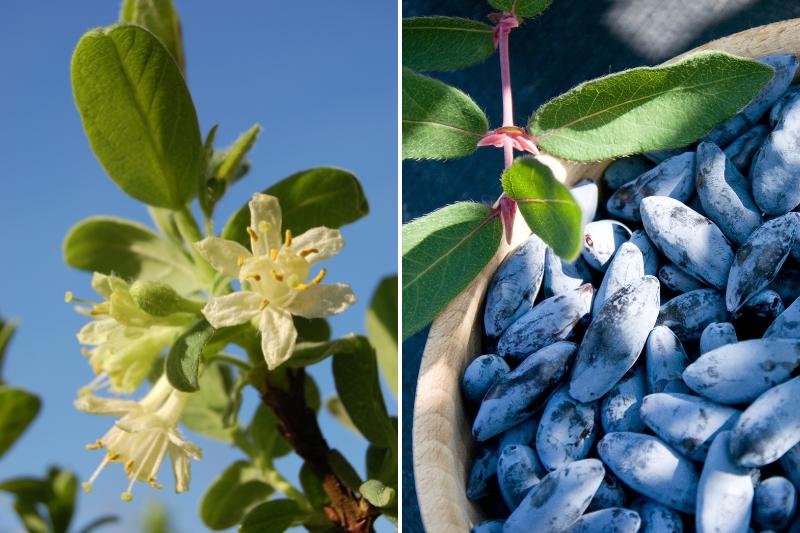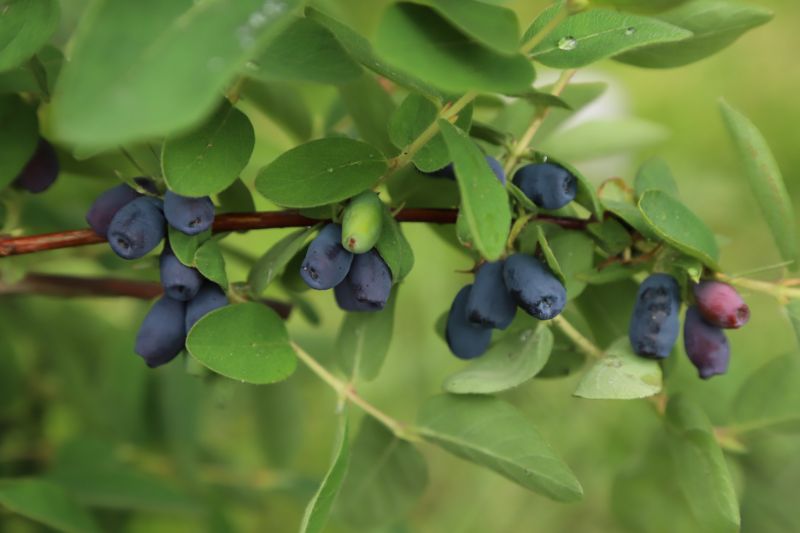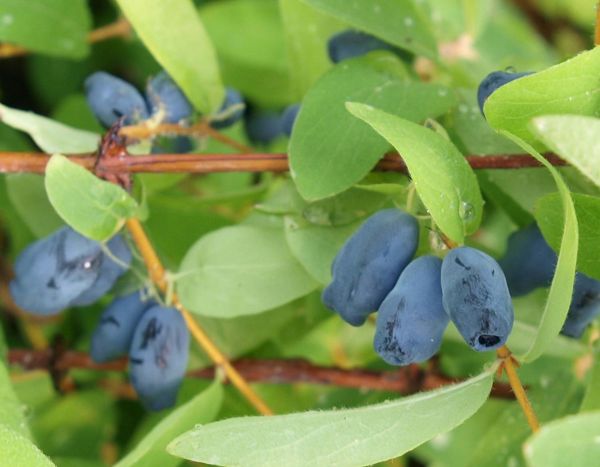For several years now, I have passionately transformed my small city garden into a productive garden. I have selected and planted various species of fruit bushes and numerous aromatic perennials. In this garden, there was still a spot to develop, exposed to morning sun and then shaded for the rest of the day. Fruit bushes, with the exception of hazel trees, struggle in these shaded areas. And then I heard about a bush that thrives, even in partial shade : the May honeysuckle (Lonicera caerula) or Blue Haskap! Perfect in every way, easy to grow in my Hauts-de-France region, I thought I would succeed in cultivating it without a hitch… but sometimes, despite experience, we forget certain obvious precautions and the weather plays tricks on us!
I will tell you how I missed out on the May berries, which can happen to any gardener, even an experienced one.

My discovery of May berries (Lonicera caerula)
Gardening friends had described the great qualities of May berries, or Blue Haskap, or Lonicera caerula for those in the know! This little wonder is a bush honeysuckle unlike any other. Adorned with delicious blue berries, elongated, which can be harvested as early as May (hence its name). Their pulp? Green or red in colour, it is as juicy as it is sweet, with just the right amount of acidity to tantalise the taste buds. Whether enjoyed fresh, as juice, jelly, or transformed into jam, this berry knows how to be loved in all its forms.
But don't be fooled, behind its delicate appearance, the Blue Haskap is tough as nails! Capable of withstanding polar cold down to -40°C, it is not intimidated by a little frost. And to top it all off, it flowers in March and is very melliferous, perfect for the first foragers emerging from winter.
A little tip between us: for a generous harvest, consider planting two of these beauties. They thrive equally well in pots or in the ground, and pair wonderfully with other varieties of small fruits, forming a delicious and decorative hedge! These are the qualities my gardening friends had praised.
Without further ado, I decided to install two Lonicera caerulea kamtschatica 'Blue Velvet'. I selected this variety for its height of 1.5 metres and a spread of one metre, but also for its preference for a sunny or partially shaded location.

Planting May berries
The Blue Haskap (or blue honeysuckle) has its preferences, like all plants. It likes neutral to acidic soils, remaining cool and moist, even in summer. Dry and very calcareous soils? Not for it! To pamper it, you need to provide a little sunny or partially shaded spot, especially in regions where the sun likes to hit hard.
This bush is not too fussy about soil texture. Whether sandy or clayey, it adapts. However, it does have a slight preference for soils rich in organic matter. Be careful though, it sulks and wilts in shallow, dry soils. So far, my garden was doing everything right! I still took care to loosen my soil with a broad fork before planting and added well-matured compost to enrich the soil, to be renewed once a year.
I planted my two Haskaps in spring, in April, taking care to avoid late frost or heatwave periods. Note that they can also be planted in the garden in autumn. I maintained a distance of about 1 to 1.2 metres between the plants, so they could thrive without crowding each other.
Before planting, I soaked the root ball to give it a good start. Once the plant was in place, I covered the root ball with soil and lightly compacted it to form a watering basin. A good watering to start, mulching at the base to retain freshness and moisture, and off we go!
→ To learn more about planting, read our article on blue honeysuckle, May berry: planting, cultivation, care.

So what happened?
My Haskaps had been well planted, they were slowly establishing themselves, and I even had 4 to 5 small blue berries as a thank you for my care. You must be wondering where I went wrong?
Well… in June, I had to move my May berries! Indeed, the policy of my town regarding waste sorting had changed, and I needed to transform that area of the garden into a composting and rubbish storage site.
Note that we are now at the beginning of summer and it is not the right season for planting, due to the lack of water and the risk of drought! And as I was in a hurry, I didn't want to wait for autumn (which I should have done!) : first mistake! Did I have too much faith in the plant's resilience? Did I err on the side of overconfidence? Good question!
This is how I moved my lovely bushes, to replant them a few metres away, but in full sun! This complete change of exposure amplified the stress from the move in the middle of summer. Second mistake!
And as if that weren't enough, the weather got involved… A long period of drought began that week, followed by a heatwave! Despite mulching to retain moisture and regular watering, the conditions were unfavourable. My blue honeysuckles had not had enough time to root properly to withstand these conditions. I’ll let you imagine their state!

Conclusion of this misadventure
So, what is the outcome of this adventure with May berries? Well, let's say that my two bushes are still alive, but they have clearly seen better days and look rather poor. I will need to be very vigilant over the next two summers to ensure their survival.
This experience turns into an invaluable lesson. It highlights the importance of strictly following planting periods and advice, and not rushing things. In gardening, patience is more than a virtue; it is a necessity! I learned the hard way that even experienced gardeners can stumble over the root of the unexpected and impatience.
These experiences, despite their bitter taste, prove to be excellent fertiliser for our gardening skills. They show that even mistakes have their place in our garden of learning. And who knows? With a little tenderness and compost, my bushes might just recover from their summer escapades.
































Comments